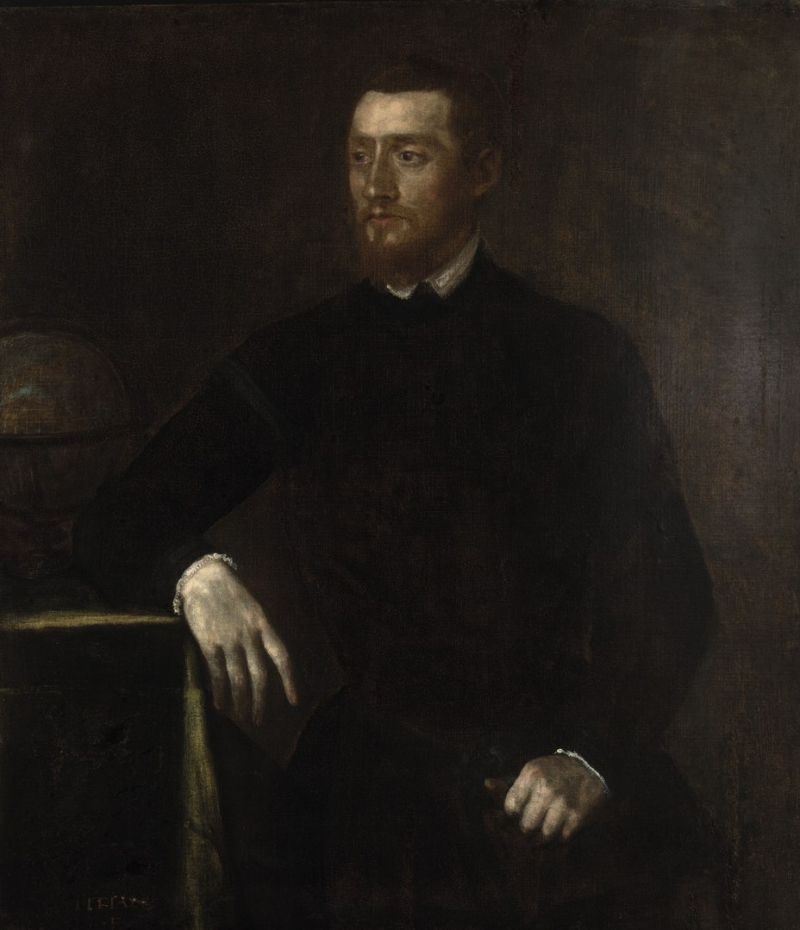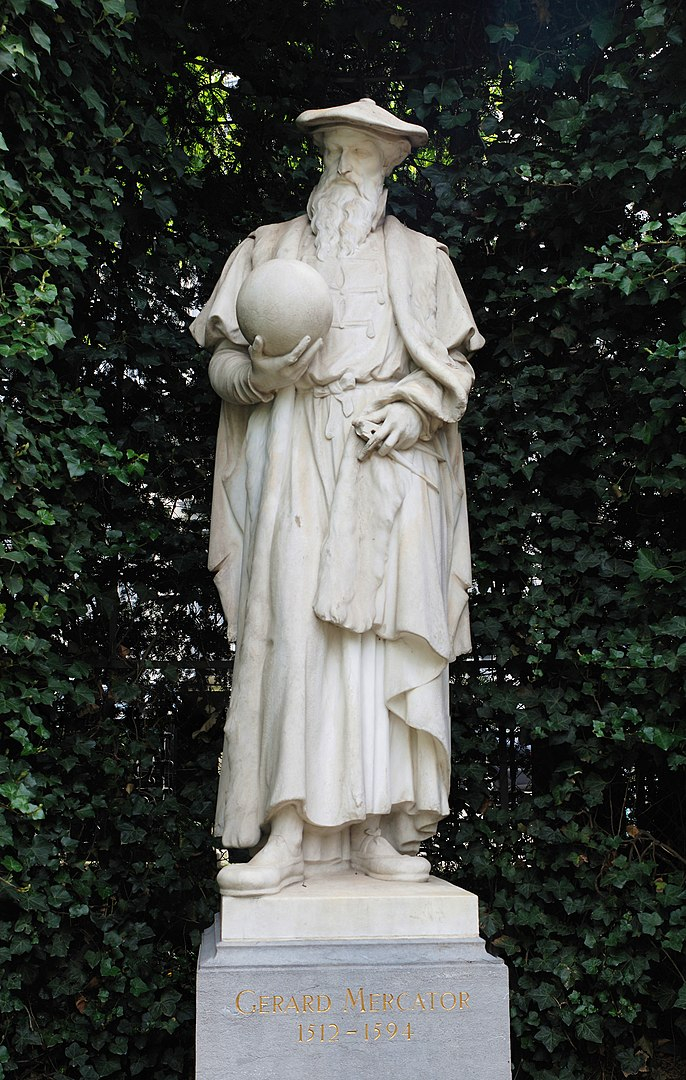Gerardus Mercator
Gerardus Mercator (5 March 1512 – 2 December 1594) was a Flanders-born 16th-century geographer, cosmographer, and cartographer. He is most known for designing the 1569 globe map, which used a novel projection to portray sailing paths with constant bearing (rhumb lines) as straight lines, an innovation that is still used in nautical charts today.
Mercator was a pivotal figure in the history of cartography. He is widely regarded as one of the founders of the Netherlandish school of mapping and geography, with Gemma Frisius and Abraham Ortelius. He is also commonly regarded as the school's most renowned person. He was a well-known producer of globes and scientific instruments in his day. He was also interested in theology, philosophy, history, mathematics, and geomagnetism. He was also skilled calligraphy and engraver. Unlike other famous intellectuals of the period, he traveled infrequently, and his understanding of geography came from his collection of over a thousand volumes and maps, guests, and his extensive communication (in six languages) with other scholars, statesmen, travelers, merchants, and seafarers.
Mercator's early maps were large enough for wall installation, but in the second half of his life, he created over 100 new regional maps on a smaller scale suited for binding into his Atlas of 1595. This was the first time the word Atlas was used to refer to a map book. Mercator, on the other hand, used it as a neologism for a dissertation (Cosmologia) on the origin, history, and description of the cosmos, rather than just a collection of maps. He picked the name to honor the Titan Atlas, "King of Mauretania," whom he regarded as the first great geographer.
The sale of terrestrial and celestial globes provided a significant portion of Mercator's income. For sixty years, they were regarded as the finest in the world, and so many were sold that there are several surviving examples. This was a large-scale operation that included manufacturing the spheres, printing the gores, constructing large stands, and packing and delivering them around Europe. He was well known for his scientific tools, particularly his astrolabes and astronomical rings, which were used to research astronomy and astrology geometry.
Mercator published on geography, philosophy, chronology, and theology, among other topics. All of the wall maps were etched with extensive text about the place in question. The famous world map of 1569, for example, is etched with approximately 5,000 words in fifteen legends. His chronology chart was 400 pages long, and it fixed the dates (from the beginning of time) of earthly dynasties, key political and military events, volcanic eruptions, earthquakes, and eclipses. He also published works on the gospels and the Old Testament.












